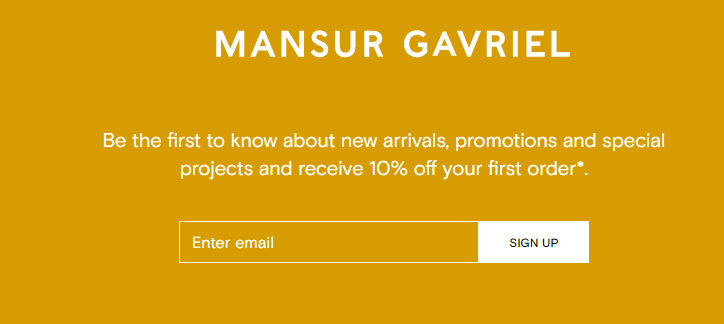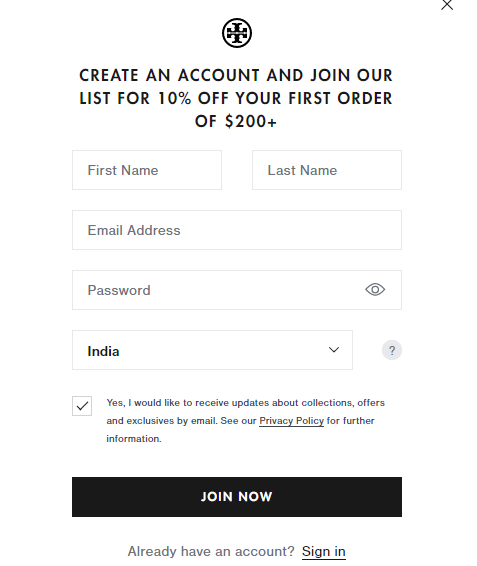With Google imposing a crackdown on third-party cookies and Apple announcing Mail Privacy Protection, email marketers round the globe have been forced to rethink and restructure their marketing strategies. A greater focus on protecting consumer privacy means that businesses are now required, without exception, to seek the explicit permission of their customers to utilize data spawning from digital interactions. This has led to “zero-party data” and “first-party data” becoming unmissable buzzwords within the digital advertising space over the last year or so. Now, what exactly do these terms mean? Let’s take a look.
Zero and First-party Data: A Brief Introduction
Zero-party data refers to the information that is provided to you directly by your customers, of their own volition. First-party data refers to insights that a business gleams from the interactions of its customers on its owned channels. Unlike mining third-party data, which happens without the customer’s awareness, the collection of zero and first-party data hinges on transparency and honesty. As a result, it paves the path for improved customer retention and loyalty.
However, that is not their primary merit. Both zero and first-party data empower marketers to deliver highly personalized online experiences, including email marketing campaigns. In a day and age where people have grown indifferent to the deluge of promotional emails and newsletters that hit their inboxes on a daily basis, a personalized message is what you need to get on top of their attention. And at the core of personalized campaigns lies data. With zero and first-party data at your disposal, you can treat every contact on your list as an individual, thereby making sure that you seal your place permanently in their good books.
Well, now that we understand the importance of zero and first-party data, let us see the various ways in which marketers can collect and subsequently leverage it to improve the performance of their campaigns. We address the former first.
How Can You Collect Zero and First-Party Data?
The modern-day consumer is hyper-sensitive to how their online presence is documented. They will give you the nuggets necessary to build a comprehensive buyer persona so long you keep their faith by providing user experiences that are personalized to a fault. That said, obtaining this data from them is no mean feat in the first place. Listed below are some techniques that will enable you to effectively gather zero and first-party data.
- Signup Forms
An impactful signup form is an excellent tool for collecting zero and first-party data and building a high-quality, organic email list in the process. Email campaigns sent to contacts added via signups register higher opens and click-throughs, which in turn gives a significant boost to your email deliverability.
Now, the million-dollar question- What goes into making an effective signup form. We’ve spelled the code out for you in the following points.
- Keep things simple. The copy should be crisp, the design unfussy, and the number of input fields as few as possible. For instance, take a look at this registration form by Zooplus.

Here, along with asking for the visitor’s email address, they have also asked them to specify which newsletter they would be interested in. You can tick one, multiple, or even all the boxes. This is extremely simple but gives Zooplus just the information they need to send out personalized newsletters. After all, a dog parent wouldn’t have much to pick up from a cat newsletter, would they?
- Ensure your value proposition is prominent. When visitors are providing you with their information, you must inform them, with absolute clarity, what they are getting in exchange. Take a look at this form by Mansur Gavriel.

Absolutely no room for confusion, is there?
- Incentives work. So, do make it a point to include them in your signup forms. As a matter of fact, nearly 60% of people fill out signup forms in the hope of receiving an incentive. It could be a coupon, a calendar, an ebook, or anything that you deem fit.
Here’s what Tory Burch’s incentive looks like.

- Last but not least, always give your visitors the choice of opting out. It isn’t necessary that every person who signs up for your communication be fond of them. Hence, both your signup form as well as your onboarding emails should have clear information regarding how to unsubscribe.
- Recommendation Quizzes
Spotted on most eCommerce websites these days, product recommendation quizzes pose multiple questions to your visitors revolving around their interests and preferences and recommend a product at the end based on their responses. These quizzes are loved by both customers and businesses alike.
- For the customers, it leads them to the products that best suit their needs.
- To the businesses, it grants valuable zero-party data, allowing them to personalize their customers’ experiences in the future.
Now, what if the visitors don’t go ahead with purchasing the product you recommended? Well, now that you know what they like, you can catch their attention with a highly personalized browse abandonment or cart abandonment email.
Given below are some tips you should take into consideration while designing a recommendation quiz.
- It can either be at the beginning of the quiz or at the end, but do make sure that you obtain your visitor’s contact information at some point. As we said above, the data gained from these quizzes can make for extremely compelling cart abandonment emails. But whom will you send these messages to if you don’t have their email address or contact information to begin with?
- Be mindful of the number of questions in your quiz. One with 30-40 questions is most likely to get on your visitors’ nerves, while one with 2-3 questions simply won’t be able to do the job (you need superhuman deduction skills to recommend someone the perfect product based on a couple of responses). The sweet spot, as per popular consensus, is between 5-10 questions.
- Populate your quizzes with high-quality images and GIFs. Visual quizzes register 20% higher completion rates than their plain text counterparts.
- Surveys
Besides collecting zero and first-party data, surveys help you stay right on top of your customer’s impulses. Insights gathered from surveys allow you to improve customer experiences and your business processes in the long run. While you are free to invite your customers to participate in a survey at any point of their customer journey, we feel the most optimal time to do so is after a purchase. This is because, in the post-purchase phase, they will be well equipped to answer questions pertaining to product quality and the overall checkout experience.
Here’s a neat survey email by DeFeet.

- Website And In-App Activity
Monitoring customers’ website and in-app activity can give you a treasure trove of first-party data. Which pages do they visit more frequently? Which line of products do they view the most? Under what budget range do most of their purchases fall? Finding the answers to these and other similar questions will let you cater effortlessly to your users’ needs and requirements.
Taking Email Marketing Campaigns To The Next Level by Leveraging Zero And First-Party Data
Collecting zero and first-party data done is one part of the job. The other part, which determines the success of your email campaigns, is how expertly you manage to leverage them. Listed below are a few techniques you can consider adopting.
- Reference the zero and first-party data that you collect in your future communications. One instance of this we have already discussed earlier- utilizing recommendation quiz responses to craft personalized cart abandonment emails. There are many more possibilities! For example, you can put this data in the subject lines of your emails. That is bound to grab the attention of your readers.
- It becomes easier to implement zero and first-party data in your campaigns when you use a dedicated collection platform for them. Subsequently, you can integrate the same with your CRM and other marketing channels to automate customer experiences.
- Zero and first-party data can increase the effectiveness of your re-targeting ads by leaps and bounds. Say, you are a bookseller. Taking a leaf from Zooplus’ registration form that we saw earlier, you also ask your visitors to specify the genre of your choice. Except now they have to choose literary genres instead of pet types- suppose your options are fantasy, non-fiction, romance, young adult, drama, horror, and crime. Now, to a visitor who chose crime, if you show ads for romance novels, will they respond? This is the peril of generic ads. However, thanks to zero and first-party data, you have the option of running differentiated ads, skyrocketing your conversion rates in the process.
Wrapping It Up
The major benefit of implementing zero and first-party data in your email campaigns is that it makes your customers feel heard. It lets you tell them that you care about their demands. As a result, you win not only their trust but also new customers, courtesy of the generous word-of-mouth marketing they do for you. So, what are you waiting for? Embrace this new marketing age of zero and first-party data and ensure your brand always stays ahead of the curve.



Rohan Kar
Latest posts by Rohan Kar (see all)
How To Set Up A/B Tests In Salesforce Marketing Cloud: A Step-By-Step Guide To SFMC AB Testing
4 Valuable Tips to Send High-conversion Personalized Emails with SFMC and A/B Testing